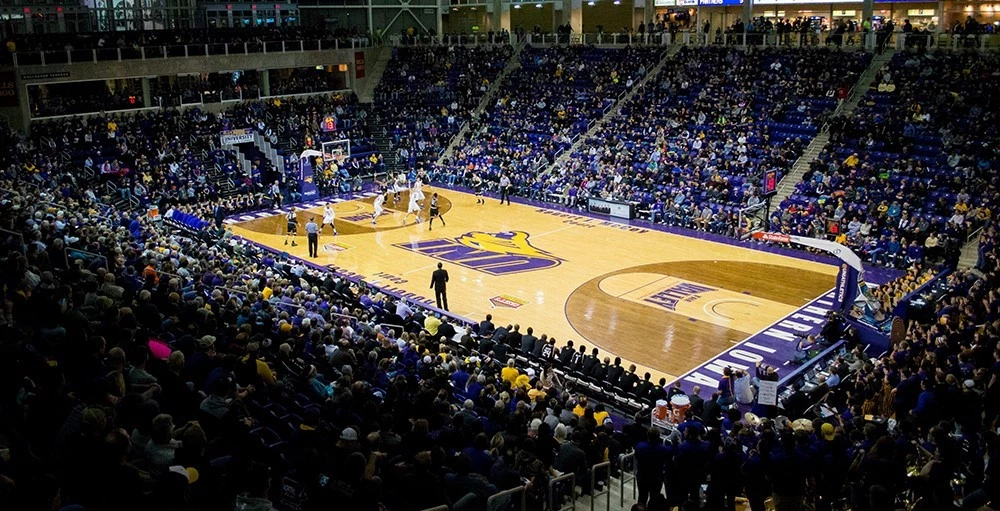Research shows that financial literacy programs can lower student loan defaults, decrease financial stress, improve academic performance, prevent dropouts, and teach students how to manage their finances for a lifetime.
It is especially important that colleges and universities address the financial wellness needs of students of color, a population that as a whole has the least access to financial education and literacy programs.
- According to the Next Gen Personal Finance’s report on the 2018–19 school year, 1 in 6 U.S. high school students must take at least one standalone semester of personal finance for graduation.
- However, only 3.9 percent of students from low-income schools (defined as one with at least 75 percent of students eligible for free or reduced-price lunch) were required to take a personal finance semester to graduate.
The pandemic is especially impacting low-income students. About 100,000 fewer high school seniors completed financial aid applications to attend college this year, according to a National College Attainment Network analysis of Free Application for Federal Student Aid (FAFSA) data through August.1
According to a report from the American Economic Association, financial literacy scores for minorities were found to be 9-16 percentage points lower than for Whites.2
This financial wellness gap can be attributed to social, historical, political, and institutional forces. A 2019 report from the Global Financial Literacy Excellence Center (GFLEC) states that financial literacy is one key way to address the disparity.3
Lusardi, Michaud, and Mitchell (2017) find that financial literacy accounts for 30 to 40 percent of the retirement wealth inequality4, demonstrating that increasing financial knowledge impacts wealth accumulation.
Racial Wealth Gap
According to an August 2019 study by McKinsey & Co., Black Americans can expect to earn up to $1 million less than White Americans over their lifetime.5
The median White family had more than ten times the wealth of the median Black family in 2016, according to the Federal Reserve’s most recent Survey of Consumer Finances.6
White families had the highest median wealth level, at $171,000, while Black families median wealth was $17,600 and Latino families were $20,700.
White workers, on average, are paid more than Black and Latinx workers at almost every education level, according to a 2018 report by the Economic Policy Institute.7
Now, the economic devastation unleashed by the coronavirus crisis has weighed more heavily on lower-income Americans and minorities, who have suffered higher levels of unemployment and a higher incidence of covid-19.
- Students from families with incomes under $75,000 are nearly twice as likely to say they “canceled all plans” to take classes this fall as students from families with incomes over $100,000, according to a U.S. Census Bureau survey in late August.8
- When low-income students stop attending school, they rarely return, diminishing their job and wage prospects for the rest of their lives. Only 13 percent of college dropouts ever return, a National Student Clearinghouse report last year found, and even fewer graduate.9
HBCUs Face Great Challenges
More than 228,000 students are enrolled at the 107 U.S. HBCUs. HBCU students borrow more money and are more likely to tap into unsubsidized federal loans and rely on their parents to also take out loans.
Student borrowers owe close to $1.5 trillion in student loan debt nationwide. However, Black college graduates owe $7,400 more on average than their white peers, with the debt disparity growing even more post-graduation due to interest accrual and graduate school borrowing.10
HBCUs face many challenges as they strive to educate students of color. According to a UNCF report 11, the student population of HBCUs is strongly skewed toward students who:
- Come from low-income homes (71 percent receive Pell Grants, double that of non-HBCU students)
- Are first-generation college students (41 percent)
Despite a much lower tuition cost, HBCU students face the need for increased financial aid, often resulting in loans. This is because Pell Grants no longer cover tuition and HBCUs tend to have smaller endowment funds and, therefore, cannot provide needed grants and scholarships.
In 1976, Pell Grants covered 72 percent of tuition costs at four-year institutions. In 2016, that was down to 30 percent. According to UNCF, this is the lowest coverage since the Pell Grant was instituted, which leaves low-income families with a larger tuition gap.
Unfortunately, HBCUs also have smaller endowments, making it less likely that they can fill that gap with generous financial aid plans.
UNCF also noted that the top 10 HBCU endowments ranged from $34 million to $660 million, as compared to non-HBCU endowments ranging from $10 billion to $36 billion. In fact, all the endowment holdings for the HBCU sector are just $2.1 billion.12
Financial Wellness Programs Can Solve This Problem
According to the President's Advisory Council on Financial Literacy13, the definition of financial literacy is more closely aligned with the idea of financial wellness: the ability to use knowledge and skills to manage financial resources effectively for a lifetime of financial well-being.
That’s because the link between financial literacy and financial wellness is well-documented. Those with higher financial literacy tend to14:
- Save more for retirement
- Have more emergency savings
- Control and manage their debt
- Be less financially fragile
A student financial wellness program could help students of color learn more about:
- Student loans and how they are paid
- Aligning career choices/programs of study with appropriate amounts of student loan debt
- Alternatives to student loans15
In addition to student loan topics, such programs can also teach students about managing debt, creating savings accounts, the need for building good credit scores, the value of compounding interest, and more.
1 - https://www.ncan.org/news/505741/New-Data-Nearly-250000-Fewer-Low-Income-FAFSA-Renewals-This-Cycle-Nationally.htm
2 - https://www.aeaweb.org/conference/2019/preliminary/paper/3ihGHf9h
3 - https://gflec.org/research/?type=reports
4 - https://gflec.org/wp-content/uploads/2015/12/Optimal-Financial-Knowledge-and-Wealth-Inequality.pdf
5 - https://www.mckinsey.com/industries/public-and-social-sector/our-insights/the-economic-impact-of-closing-the-racial-wealth-gap
6 - https://www.federalreserve.gov/econres/notes/feds-notes/recent-trends-in-wealth-holding-by-race-and-ethnicity-evidence-from-the-survey-of-consumer-finances-20170927.htm
7 - https://www.epi.org/publication/state-of-american-wages-2018
8 - https://www.census.gov/data/tables/2020/demo/hhp/hhp13.html
9 - https://nscresearchcenter.org/wp-content/uploads/SCND_Report_2019.pdf
10 - https://www.brookings.edu/research/black-white-disparity-in-student-loan-debt-more-than-triples-after-graduation/
11 - https://files.eric.ed.gov/fulltext/ED573646.pdf
12 - https://www.insidehighered.com/news/2020/07/27/financial-disparities-among-hbcus-and-between-sector-and-majority-white-institutions
13 - https://www.treasury.gov/resource-center/financial-education/Pages/New-President%27s-Advisory-Council-on-Financial-Capability-for-Young-Americans.aspx
14 - https://www.ncbi.nlm.nih.gov/pmc/articles/PMC5450829/
15 - https://files.eric.ed.gov/fulltext/ED527709.pdf








